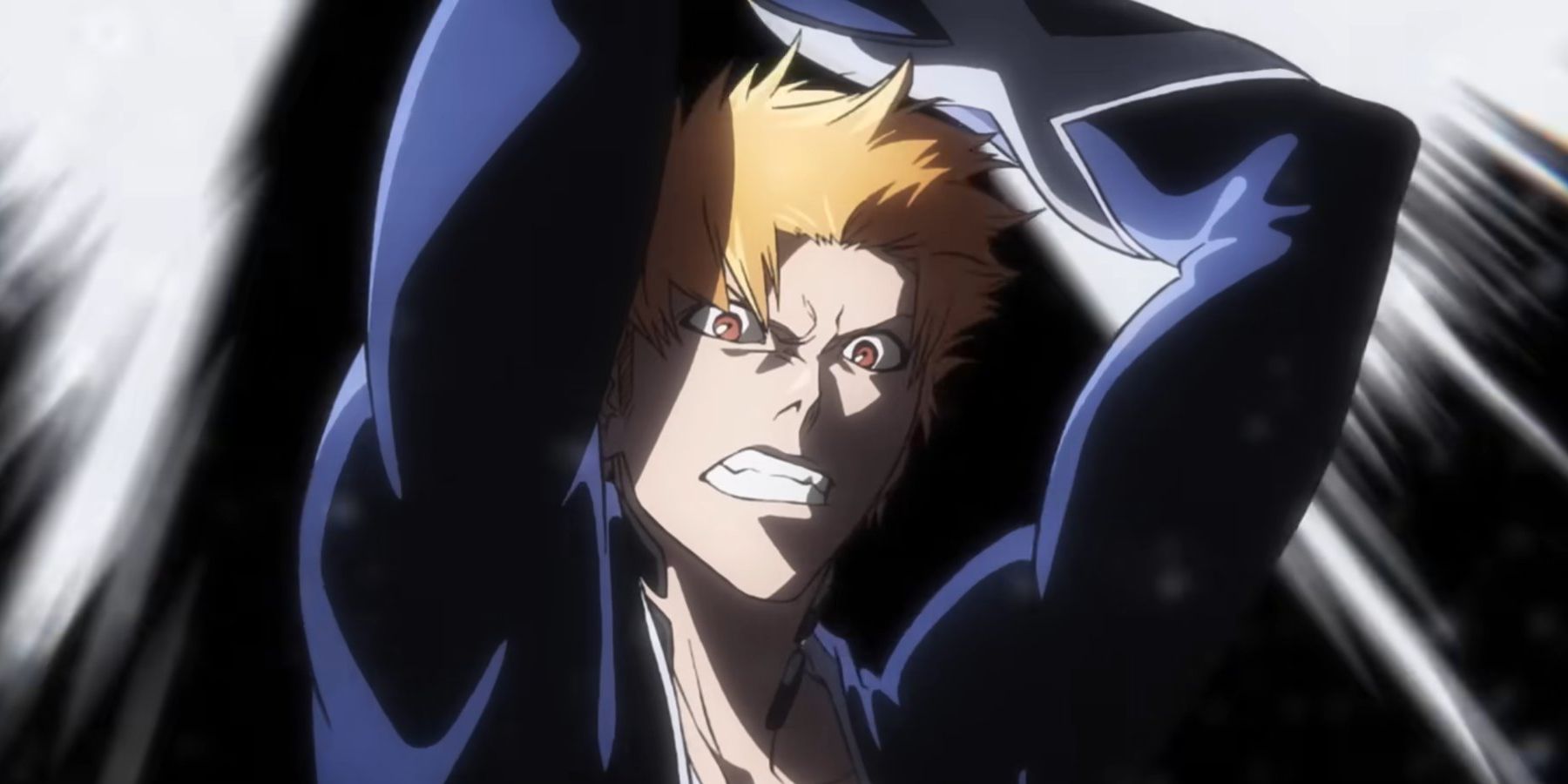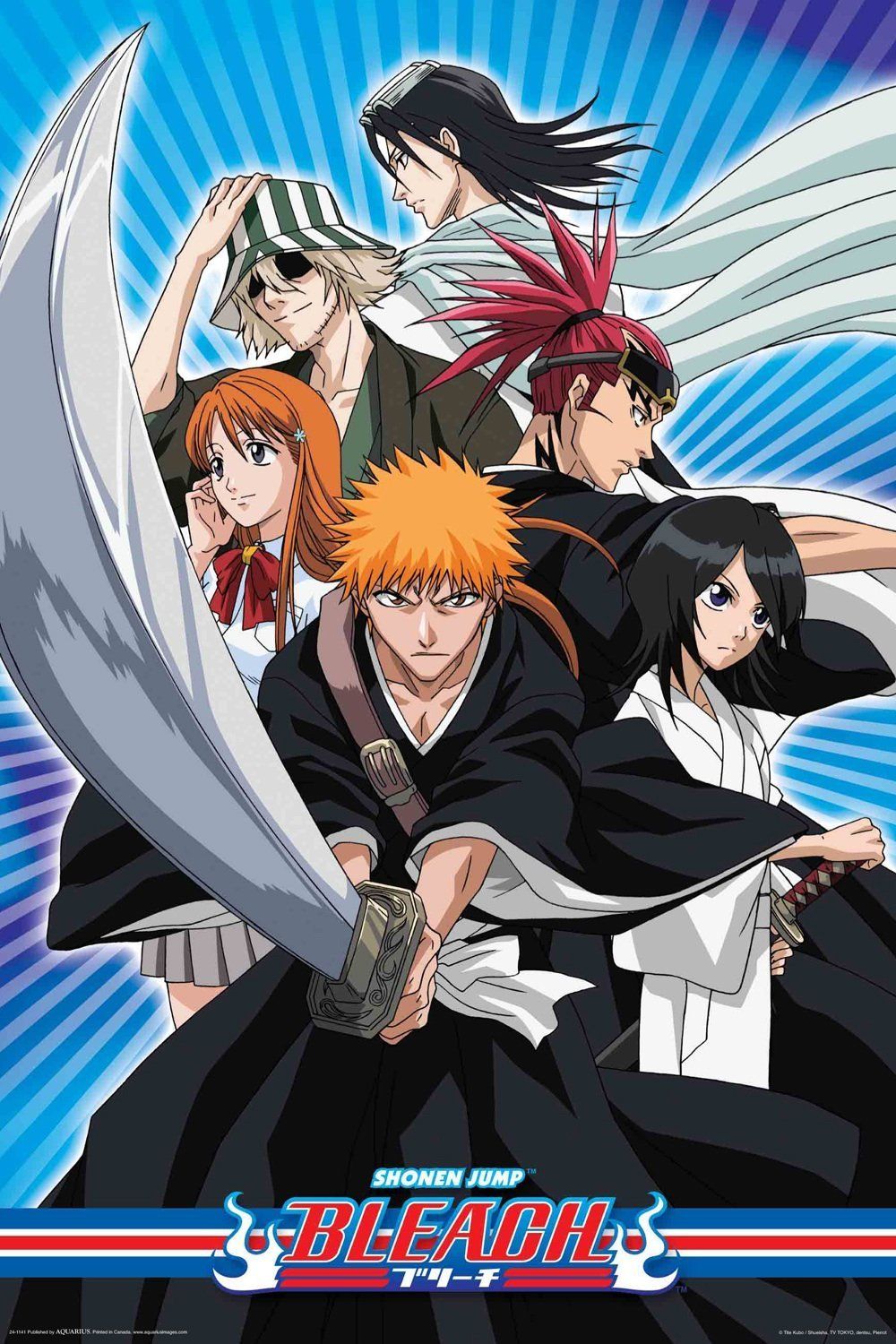In the 2000s, the shonen anime world featued the legendary shonen "big three," a trio of best-selling titles that helped define a generation of anime and entertain fans for many years. However, the big three were not equal, with Eiichiro Oda's One Piece enjoying more sales than the other two, and Masashi Kishimoto's Naruto being a true cultural icon, even if its sales fell short of One Piece's. That left Tite Kubo's Bleach as the weakest of those shonen titans, and unlike the other two, it suffered a fall from grace.
No one would call Bleach a failure, since it commanded huge sales and earned its place among the big three. Still, Bleach's legacy soured in the 2010s when its anime was the only big three anime to get axed, and the Bleach manga's ending displeased many fans. For years, Bleach slowly faded into obscurity and its legacy was in peril, but the Thousand-Year Blood War arc anime is now changing all that. The Thousand-Year Blood War anime adapts the Bleach manga arc of the same name, and it's a game-changer for new and veteran Bleach fans alike. Now, fans can rest assured that Tite Kubo's masterpiece has a safe, secure legacy thanks to a few vital factors coming together.
The New Bleach Anime Has Ideal Pacing and Production Values
The Thousand-Year Blood War Arc Puts Bleach Animation on Par with Demon Slayer
On many levels, the Thousand-Year Blood War anime is a vast improvement over the original Bleach anime, which ran from 2004 to 2012. It's a serious case of quality over quantity, such as with pacing and production values. In fact, pacing is the Bleach anime's best asset now, with the Thousand-Year Blood War anime doing away with the leisurely, inefficient pacing of the original Bleach anime. For that matter, all of the original big three had sluggish pacing in the 2000s and 2010s, with many arcs taking far longer than they really needed to tell a story.
Those anime series didn't even need filler to pad the runtime — they indulged in unecessary reaction shots, redundant internal dialogue, repeated scenes, and much more to stretch things out. Perhaps fans didn't mind at the time, but in today's anime world, pacing means a lot, and anime like Demon Slayer and Jujutsu Kaisen have sharp pacing. Now the Bleach anime has what it takes to fully catch up and do so in a valid way.
Gone are the days of needing 50+ episodes to tell a simple story of fighting villains like Sosuke Aizen and the Espadas, and even the fondly remembered Soul Society story arc felt off with its pacing. That arc did have a lot of material to cover, but even so, it needed around 40 episodes to complete its isekai adventure, and no anime today would need so many episodes. For example, the Quincy empire's initial Soul Society invasion in the Thousand-Year Blood War arc only took five episodes to show a handful of battles across the entire Soul Society.
In the second cour, it didn't take 40+ episodes for the Soul Reapers to fight the Sternritter and begin the series' endgame. Despite its massive length, the Thousand-Year Blood War arc is moving at a brisk pace without cutting any essential material, and any fan can appreciate that. Now, more than ever, the Bleach anime feels like Demon Slayer and Jujutsu Kaisen, both of which are its ultra-popular spiritual successors.
Aside from much-improved pacing, the new Bleach anime is polishing the overall franchise's image with its modern animation techniques, a predictable but still essential way for the Bleach anime franchise to embrace a new era. The original anime was simply a product of its time, and none of the big three looked that great when they started airing. They had simpler animation techniques and low-def visuals that no Attack on Titan or Jujutsu Kaisen fan would find impressive, so it may feel awkward to rewatch those early episodes in their low-def glory.
Before the Thousand-Year Blood War anime arc launched, curious new fans of Bleach would see those 2000s-era visuals and not be too impressed, but the Thousand-Year Blood War arc proves that Bleach deserves top-tier animation on par with anything Studio UFOtable can manage, such as Demon Slayer. Now, anime fans have excellent visual reference for what a Bleach anime can and does look like.
The Thousand-Year Blood War Anime Means Bleach is No Longer an Abandoned Project
Studio Pierrot is Finally Completing The Bleach Story After 10 Years Redeeming Its Legacy
Fans might say that the Bleach franchise has partially faded into obscurity compared to its more mainstream counterparts One Piece and Naruto, but that's wasn't the Bleach anime's only problem in the years leading up to the Thousand-Year Blood War anime. Even when Bleach was prominently featured in the anime world, it had the stigma for being a canceled anime, a problem that One Piece and Naruto lack. The Naruto anime was finished and One Piece is still going strong with its Final Saga anime, like the Egghead Island story arc, so Bleach feels like the failed one in that trio.
Not every anime fan will care too much about that or judge Bleach harshly about it, but the fact still remains. Some anime fans might have thought there was no point in watching Bleach if it got axed most of the way through. Excellent seinen manga like Berserk and Vagabond are still read even though they're conspicuously incomplete, but Bleach didn't quite share their stellar reputation to make up for its incomplete status.
Fortunately, all of that is now a moot point with Studio Pierrot completing the Bleach anime after 10 years of the original anime's cancelation. Best of all, it doesn't just feel like Studio Pierrot is wrapping up a loose end to get it over with — it genuinely feels like Pierrot is enjoying the process of finishing the Bleach anime, almost like meeting up with an old friend to catch up after 10 long years. Not only does this mean anime fans can finish the story, it also means the stigma of cancelation is blunted.
The fact may remain that the original got axed in 2012, but if Pierrot is working this hard to finish the Bleach anime in true style, then the anime is clearly still worth everyone's time. The cancelation was due to circumstances of the time, not the Bleach franchise's overall quality. So, fans may no longer view Bleach as "that old anime that got canceled." At least, not nearly as much, and that's what its legacy urgently needed.
The Thousand-Year Blood War Anime Makes Bleach Part of the Conversation Again
There is a Reason Why Bleach Made it Into The Infamous Big Three Alongside Naruto and One Piece

In all fairness, the Bleach franchise never fully dropped out of the anime conversation. On merit of being a "big three" anime series, Tite Kubo's creation has remained a titan of the industry, but as time passed after its anime cancelation, it felt less prominent, and while it was still there, the anime community started to overlook it. Or perhaps they were less impressed by what they saw, and turned their attention to newer, shinier, and more action packed titles like Attack on Titan and My Hero Academia.
While the Bleach franchise still had merchandise and got lip service, it didn't seem to measure up to what One Piece and Naruto had and still have. Now, with the Thousand-Year Blood War anime ongoing, Bleach is a prominent part of the conversation once again, more so than it has been in years. That's partly because the Bleach anime now has modern visuals and proper pacing, and it even lacks filler arcs and episodes that would turn fans off.
With its quality alone, the new Bleach anime has generated fresh buzz about the franchise, but most of all, the sheer newness of the current anime is what's saving the Bleach franchise and polishing its legacy. By now, more anime is being churned out than ever, with each anime season packed with titles of all kinds. So, it's not at all surprising how easy it is for a series to get lost in the noise or get replaced by something new.
There may be exceptions, such as the famed "dark trio" of titles that made a name for themselves. But otherwise, anime fans are spoiled for choice, and thus many series struggle to stand out unless they're airing at the moment. With so many series rotating in and out, it's a matter of what's currently streaming and releasing new episodes, so each anime gets a brief but fair chance to shine. That being said, big titles will more than likely garner high audience numbers, especially if the manga was very successful.
With two cours complete and two more on the horizon, the Bleach Thousand-Year Blood War anime is in its prime, making the franchise a big part of the conversation by being fresh and new. By nature, that's a temporary advantage, but that's just how the industry works, and Bleach has more than sheer newness to keep its legacy intact. The newness is just the hook to draw fans into a huge, famous, and substantial shonen adventure that has plenty to share, and it's the original anime's best chance to get some new viewers.
Put another way, today's anime fans may show up for the Thousand-Year Blood War arc, then stick around for the classic original if they're so inclined, giving longtime Bleach fans some new company. The current story is all about Ichigo Kurosaki's battle against the Quincy empire, the Wandenreich, and intrigued fans can see what came before, from the reverse-isekai Substitute Soul Reaper arc to the Soul Society arc and Ichigo's journey to the bleak desert world of Hueco Mundo and beyond. That's how Bleach will remind fans why it became a "big three" title in the first place.


